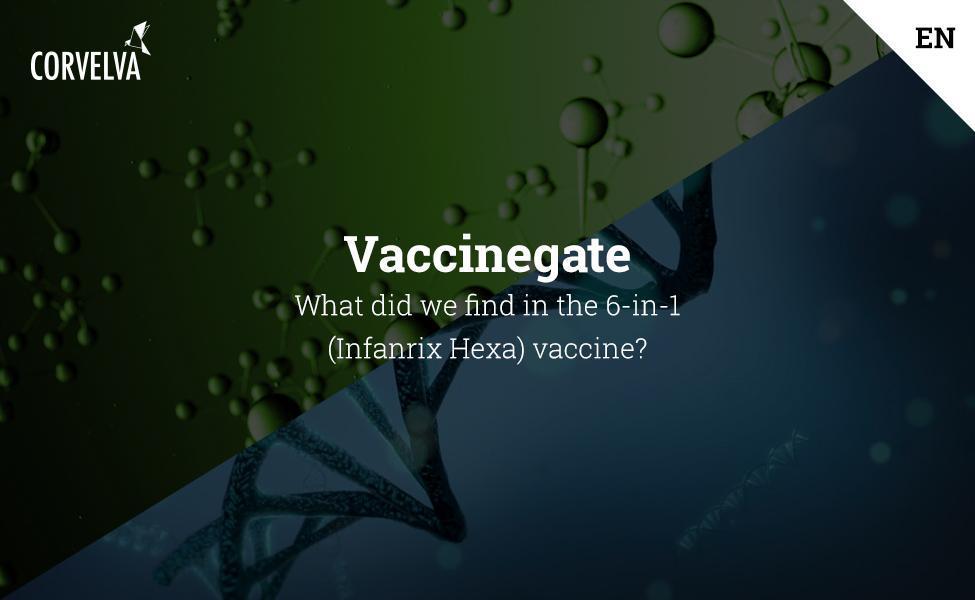We want to take stock of the situation together with you. Eight months have passed since July 2018 and in these length of time we have achieved extremely satisfying results. We have presented a research program and regarding the vaccines analysis we are able to make a point of reference, with the objectives achieved, those being finalised and those only planned for now.
To begin with, the analyses of 2 compounds for each vaccine have been verifyed by means of standards, using certified control standards with a concentration in the order of micrograms / mL. The compounds we have chosen are among those known for their critical hazard profile. We are talking about a cumulative quantity, a total amount of those recognized as identities and those to be identified, which can be estimated within the order of 50 micrograms / mL, in contrast to the EMA / FDA guidelines.
These tests have given positive results, therefore they fully confirm the analysis method! The contaminations observed are probably due to different and variable manufacturing process’ phenomena and topics. What has been observed in the course of the studies is an “inter-batches” variation of the composition, which makes us assume that there are some steps along the whole product manufacturing process that are difficult to control.
Summary table showing the results of analyses (Infanrix Hexa)
- Antigens - Protein antigens have not been identified. Presence of an insoluble and indigestible macromolecule that coul not be sequenced. Analisi MALDI-TOF analysis of the macromolecule: it was not possible to study it because it incorporated the matrix of the analysis. 1 Is it a prion behaviour?
- Chemical Contaminants (signals) - 65 (35% known) PEG, formic acid
- Chemical toxins - 8
- Protein Contaminants - NO
- Free peptide contaminants - 16
- Residual DNA/RNA deriving from cultured cells - Under the instrument detection limits
- Adventitious viruses - NO
- Other microbial contaminants - NO
- Processing residues of genetic material - NO
In-depth information on the vaccines analysed
Infanrix Hexa (GlaxoSmithKline) 2 Chemical composition profile study 3
They were found in the vaccine:- C Chemical contamination from the manufacturing process or from cross-contamination with different production lines
- Chemical toxins
- Bacterial peptide toxins
- Insoluble and indigestible macromolecule, reacting to the protein test but not recognised by the protein databases
They were not found:
- Protein antigens of diphtheria toxoids, tetanus, pertussis, hepatitis B, Haemophilus influenzae B, Poliomyelitis 1-2-3
- Formaldehyde and glutaraldehyde, phenoxyethanol, antibiotic residues (indicated in the composition)
The proteins solubility and the possibility of being digested (i.e. reduced to small peptide fragments) are the two typical characteristics making it possible to study them by protein analysis methods and which are a necessary requirement for interaction with the immune system for the creation of protective antibodies; if the structure of a protein is profoundly modified from the original one, even the antibodies will be completely different from those that are able to attack the original antigens causing the diseases.
Since this polymer derived from the mix of antigens, is not only different from the point of view of spatial conformation but above all it is different from a chemical point of view, we can state that we are not facing similar antigens to the original ones but a compound with an unknown and unpredictable toxicity and effectiveness.
In addition to the fact that vaccination antigens have not been actually detected, 65 signals of chemical contaminants have been found, 35% of which were known, i.e. recognized for comparison with databases.
Among these signals, 7 chemical toxins have also been identified; these toxins not yet uniquely defined in the structure, seem partly to derive from the reaction of formaldehyde, glutaraldehyde, and cyanogen bromide with other chemical contaminants present in the vaccine. We’d like to point out that a large proportion of these toxins have a proven and reported toxicity in Pubchem or Toxnet and pose a significant safety concern.
The study of the protein and peptide fraction has shown various free peptides (i.e. short fragments of amino acid chains) of bacterial and fungal origin. Bacterial peptides are reported in the literature as potential allergens and capable of inducing autoimmune reactions and these also pose a safety concern that will need to be clarified with regulatory agencies.
References:
- https://drive.google.com/file/d/1y7Nx4QokoR049sqikC1Tql4Jxp-G7Xoc/view
- https://farmaci.agenziafarmaco.gov.it/aifa/servlet/PdfDownloadServlet?pdfFileName=footer_000231_034960_RCP.pdf&retry=0&sys=m0b1l3
- https://drive.google.com/file/d/128CfYaaJdMwhx5yvCGDRggl5GIKyfWrC/view
- https://www.ema.europa.eu/en/documents/scientific-guideline/ich-q-6-b-test-procedures-acceptance-criteria-biotechnological/biological-products-step-5_en.pdf
- https://drive.google.com/file/d/1y7Nx4QokoR049sqikC1Tql4Jxp-G7Xoc/view



